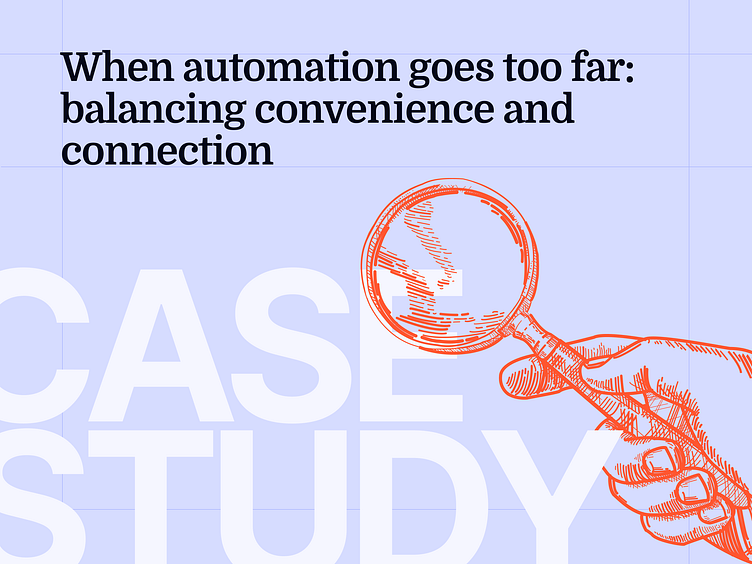When automation goes too far
Technology can make our lives safer and easier, but sometimes automation can eliminate interactions that bring truly joyful moments to users.
The challenge
One of our clients provided a telemedicine service for the elderly that included a wristband with a panic button that users could press at any time to initiate a call on speaker phone to the customer care call center. Intended for emergencies, the representative would assess the situation after speaking to the user and send an ambulance or other support if needed.
Many users lived alone and lacked a friend to talk to, and others would find themselves disoriented from time to time. This would prompt them to press the panic button – despite the fact that there was no medical emergency. Checking in and having a short exchange gave them a sense of security and a moment of much-needed human interaction, and would often help confused users reorient themselves. Although this was not the device’s intended function, it provided users with meaningful connection and really brightened some days.
Automation or connection?
The Apple Watch Series 4 was the first of its kind to be an FDA approved medical device. As it offered automatic fall detection, it seemed like it would make our client’s wristlet obsolete, as the Apple Watch would automatically notify emergency services as soon as a fall or alarming change in vital statistics was registered with no phone call required.
This leap forward in technology has its obvious upsides, namely, immediate action in an emergency. However, automating this process meant that users no longer have the opportunity to contact customer care for non-emergency situations, resulting in lower satisfaction and a dropoff in usage. This was because, according to one call center worker, the users simply “need to hear a friendly voice from time to time.”
In the end, the stakeholders decided to bring back the panic button. From a tech perspective, the button may be obsolete, but removing the element of human interaction deprived users of an exchange that many found comforting and meaningful – and that kept them using the service.
The impact
When designing a product, it is important to consider the users’ true needs – even if they are not in line with a fully-automated, immersive digital experience. In this case, leaving space for a call to a real person adds value for a demographic that is often overlooked, giving them a meaningful exchange that can really improve their quality of life.
Maplab is a strategic design studio that brings a human-centered approach to creating digital experiences.
Need a hand in creating a better future?
Drop us a line




